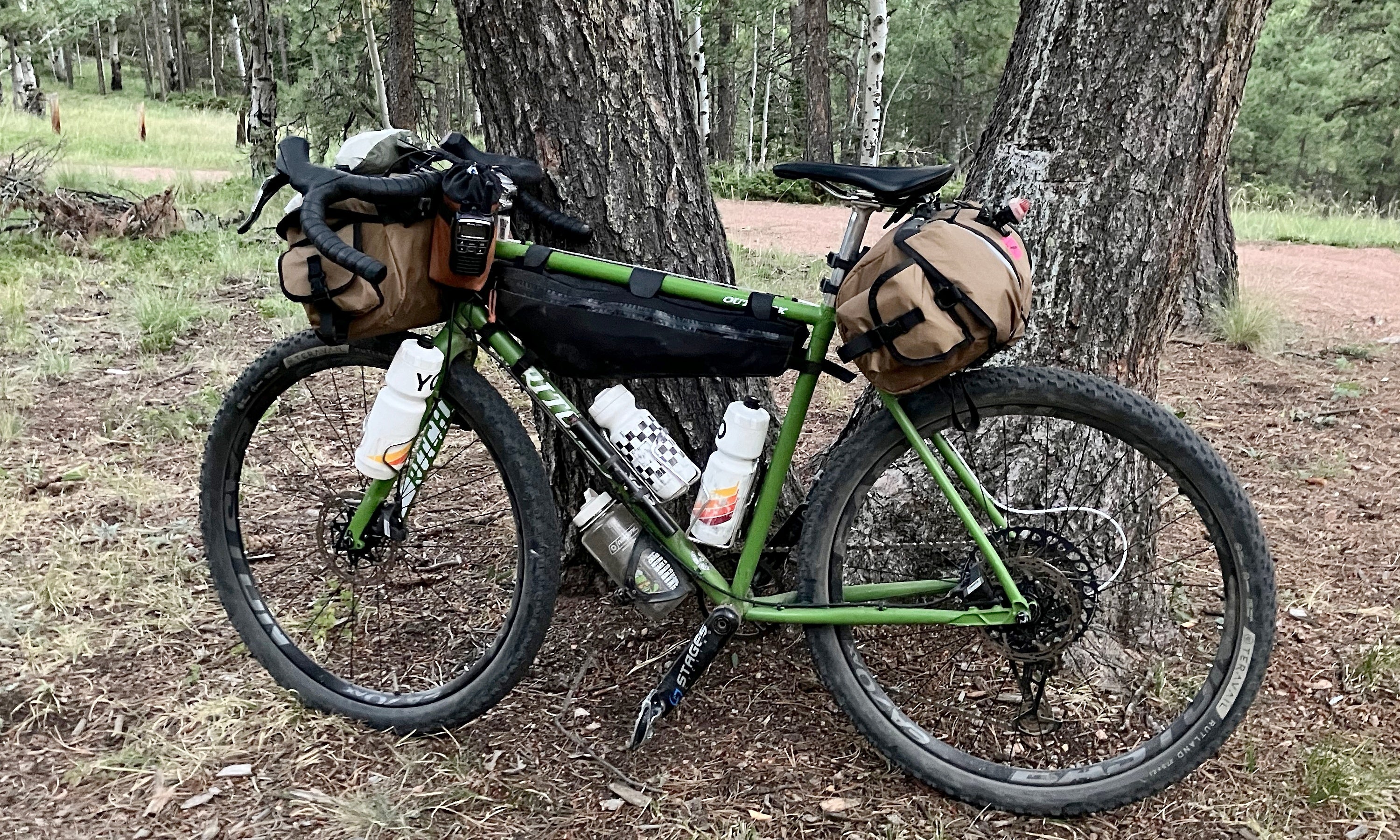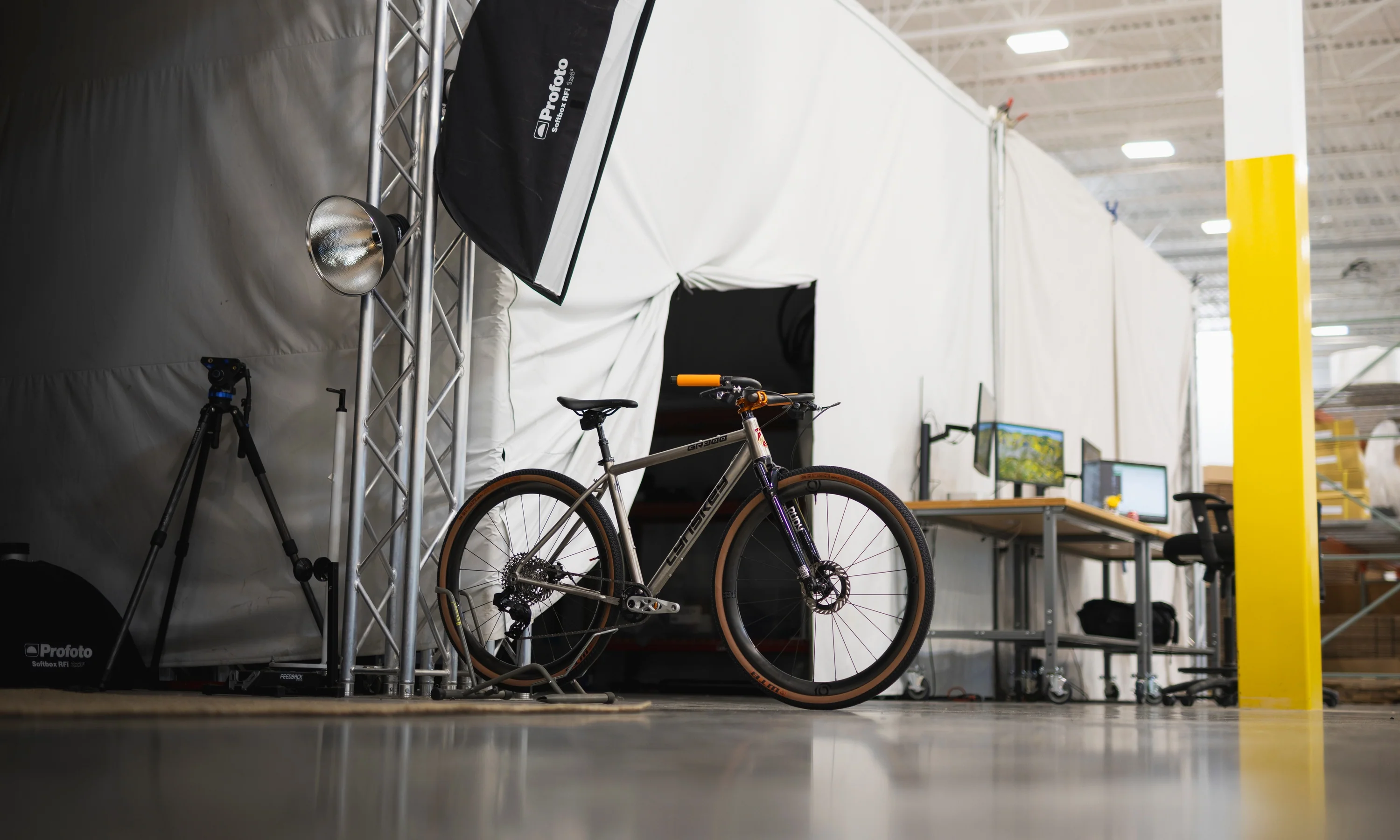After 10 hours of suffering, I found myself riding alone in the Flint Hills near Emporia, Kansas. It was 170 miles into Unbound Gravel 200, the longest and hardest race I’d ever attempted. As I battled headwinds, crosswinds, and my own failing muscles, I began to ask myself if putting aero wheels on a gravel bike is actually a good idea.
Air resistance is the greatest force cyclists have to overcome to ride faster. That’s why aero road bikes dominate road racing. Likewise, deep-section aero wheels are the ultimate upgrade for riders looking to make their bike slippery. So if aero wheels work for roadies, will they work for gravel riders too? I’ve done the research, and it turns out that things get a bit more complicated when you venture off the pavement. Here’s what I’ve learned about aero gravel wheels, and hopefully it can help you set up your own gravel bike.
[button]SHOP GRAVEL BIKES[/button] | [button]SHOP WHEELS[/button]
Aerodynamic wheels explained

Deep aero wheels do wonders on the road. Photo: Specialized
When discussing aerodynamics, Mio Suzuki, the Senior R&D Engineer leading aerodynamics at Specialized, explained that wheels are the most important aero component for road bikes.
“[Wheels] are what contact the air first,” she explained. “Everything else comes behind them in terms of aerodynamic performance.”
She explained that for a wheel to be aerodynamically efficient, it needs to smooth airflow by keeping air attached to its surface for as long as possible. Air separating from surfaces creates turbulence and thus drag. This is why aero wheels have “deeper” rims than non-aero wheels. In the early ‘90s, wheel manufacturer Zipp discovered through wind tunnel testing that increasing the depth of a rim provided more surface area for air to remain attached, allowing wheels to pass through the air more cleanly with fewer wakes and less turbulence.
“But just because [a wheel] is deep doesn’t mean it’s the most aerodynamic wheel,” Suzuki warned.
That’s because there are two additional factors beyond rim depth that have a major influence on aerodynamics — rim width and tire width — and they’re the reason aero gravel wheels are such a muddy subject.
The Rule of 105

Photo: Zipp Speed Weaponry
In the late ’90s, then Zipp Technical Director, Josh Poertner was experimenting with wider rims in an effort to control airflow. Through wind tunnel testing, Poertner discovered that when a tire approached the same width as the rim, the aerodynamics were compromised. From this data, he formulated the Rule of 105 which states that the external width of a rim must be at least 105% the width of the tire to have any chance of re-capturing airflow coming off the tire to control it or smooth it.
Poertner writes, “The critical point is that subtle variations in rim shape can and will change aerodynamic drag as well as handling, but none of it is possible unless the rim is at least 105% of the tire width.”
The Rule of 105 has had a major influence on modern aero wheel design. As tires have trended wider, so have rims. To maximize the aero performance of a 25mm tire, you need a rim that’s at least 26.25mm wide. Rims this wide have only become available in recent years thanks to improvements in carbon manufacturing and the advent of disc brakes. Now we have even wider options, like ENVE’s latest SES wheels have a 32mm external width, which is optimized for 27-29mm tires.
[newsletter]
Why aero breaks down with gravel wheels and tires

Standard gravel tires are far wider than any available aero wheel. Photo: Allied Cycle Works
If wheel manufacturers aim to follow the Rule of 105, they run into trouble with gravel tires. Most gravel-specific tires are between 38-45mm wide. An aero gravel wheel wide enough to satisfy the Rule of 105 doesn’t exist yet. To build a deep-section aero rim that wide, manufacturers would have to compromise other important elements like weight, stiffness, and compliance.
Not only that, most gravel tires are usually knobby to provide traction off-road. Tire knobs poke out and disturb the air more than a slick tire, making it even harder to reattach air to the rim. Add in the fact that the treads and casings of modern gravel tires are designed around wheels with a 21-25mm internal rim width, and it’s clear why designing aero gravel wheels is so complicated. Unfortunately, unless you run gravel tires that are very narrow and slick, you simply can’t expect the sort of aero gains that you can achieve on the road.
That’s not to say that deep-section aero wheels don’t provide any gains. Other aero-focused wheel brands like HED and FLO Cycling have done their own CFD and wind tunnel testing and found that deep-section aero wheels can provide some gains. FLO claims its G700 and G650 gravel wheels, which are 54.9mm and 55.8mm deep respectively, are optimized for 37-47mm gravel tires and can save 11 watts over a shallow box section rim. That’s not a massive savings, but if you’re competing at the sharp end of a gravel race, those 11 watts could be the difference between winning and losing.
[product-block handle="flo-cycling-g650"/]
Are aero gravel wheels worth it?

Just look at pro bikes at the world’s premier gravel race, Unbound Gravel 200, or any local gravel race, and you’ll see a big mix of aero and lightweight wheels. Gravel is an evolving genre, and riders are constantly playing with equipment to find what works best for them. Many manufacturers tend to settle on gravel wheels that are between 30-45mm deep. This is deep enough for the rim to add a bit of aerodynamic benefit without making the wheels too heavy or harsh.
But look at ENVE’s current wheel line-up, and you’ll see how one of the industry’s trendsetters sees things.
"We believe that compliance and weight trump aero in gravel," explained Pantone. "This largely in part to the speeds at which most riders ride and the size of the tires and rims used."
ENVE’s latest SES wheels offer deep aero rim options compatible with tires up to 50mm wide. However, ENVE states that running tires wider than 33mm will eliminate the aerodynamic advantage of the rim profile. So for tires wider than 33mm, ENVE recommends its G23 or AG25 gravel wheels.
[product-block handle="enve-g23-carbon-tubeless-700c-wheelset-3"/]
With a relatively shallow 25mm rim depth, the G23 is decidedly NOT an aero wheel. Instead, it prioritizes low weight, ride comfort, and puncture protection — all benefits for gravel riders compared to a modest aerodynamic gain from a super deep wheel.
"For most, running a heavier/deeper rim for a few watts of drag savings isn’t going to be as much of an advantage as saving 200 grams in the wheelset," Pantone said.
Reserve’s latest gravel 22|GR and 25|GR gravel wheels also prioritize low weight and are competitive with the G23 with sub-1,400 gram weights.
One of ENVE’s biggest competitors, Zipp, has gone down a slightly different path with its shallow 101 XPLR gravel wheels. Instead of focusing on aerodynamics or reducing weight, the 101 XPLR uses single-wall construction to maximize compliance and increase comfort and traction in rough terrain.
Compare the ENVE G23 to FLO Cyling’s previously mentioned G700, and you’ll see that G23s weigh over 500 grams less. That’s over a pound of weight, and most importantly, it’s rotating weight which affects how quickly you accelerate, and based on my own testing, how fast you climb.
Read more: Lightweight vs. Aero wheels for climbing
Does that mean a lightweight option like the ENVE G23 is always better than an aero option like the FLO G700? That depends on the terrain you ride and your general preferences.
 When I raced Unbound Gravel, I chose to run a shallow wheel for the reduced weight and extra compliance. Was it the right choice? Well, I beat my goal time of 13 hours, so maybe. But fitness probably had more to do with that.
When I raced Unbound Gravel, I chose to run a shallow wheel for the reduced weight and extra compliance. Was it the right choice? Well, I beat my goal time of 13 hours, so maybe. But fitness probably had more to do with that.
I’ve switched between aero and lightweight gravel wheels over the last few years, and neither improves my race results as much as proper training. But since most of the races I do feature lots of tough climbing, and that’s where I’m weakest, I tend to favor shallow and lightweight gravel wheels. I also find shallow, non-aero wheels to be more comfortable on super rough terrain like the gravel at Unbound. Whether or not light wheels actually perform better than aero wheels, they make me feel better, which might be their most valuable trait.
[button]SHOP GRAVEL BIKES[/button] | [button]SHOP WHEELS[/button]

























